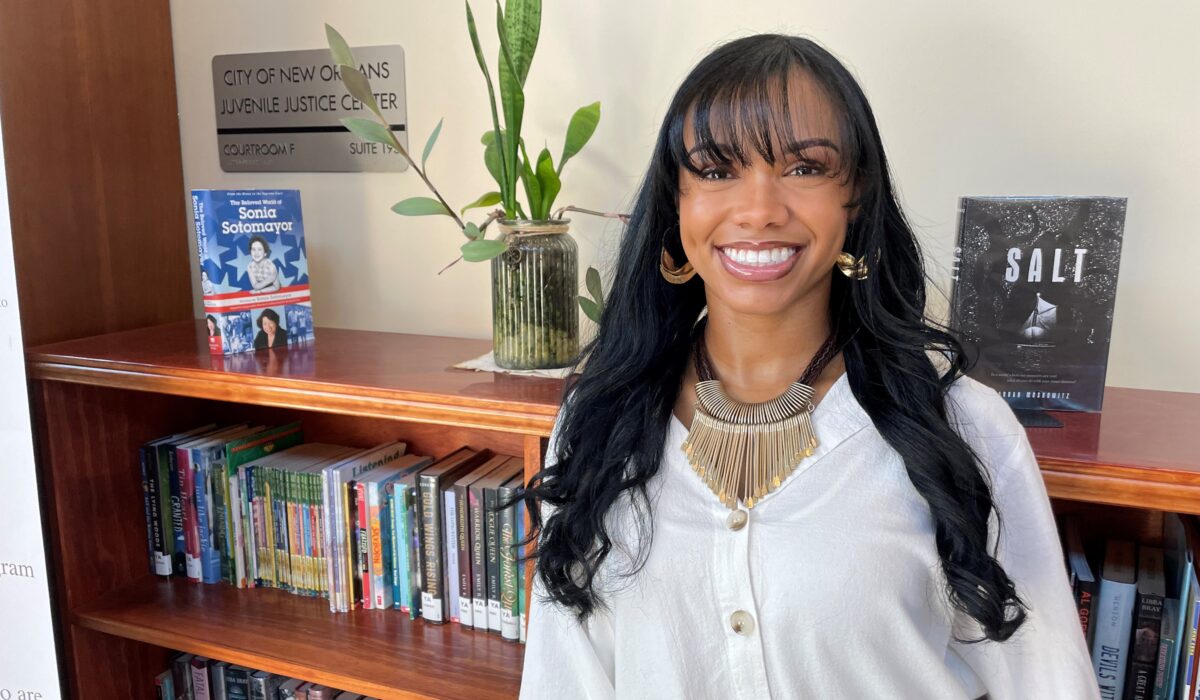
Quiz time! In 2023, there were 8,352 total arrests in New Orleans. What percentage of these arrests do you think were children? Think about your answer and we’ll come back to this in a moment.
The superpredator myth remains alive and well in the United States. It began as a theory in the 1990s that a new breed of “radically impulsive, brutally remorseless” kids were growing up in our cities having “absolutely no respect for human life.” The theory was aimed at Black kids and predicted a “bloodbath” in American streets in the not-too-distant future. It helped usher in a new era of mass incarceration, decimating families and communities in the process.
The bloodbaths never materialized. Juvenile crime, and crime in general, has steadily declined since peaking in the 90s. The theory has since been discredited, which is why it’s now referred to as a myth.
However, the enduring legacy of the superpredator is that it gave name to the fear that far too many people—across racial and socioeconomic backgrounds—clearly feel about Black teens. That fear continues to be weaponized by media and political leaders to forward policies designed to incarcerate more Black youth. We saw it again this year with the ushering in of a whole raft of new “tough on crime” laws in Louisiana, including the repeal of the Raise the Age law to make our state the first ever to resume jailing and prosecuting all 17-year-olds as adults, no matter how minor their offense.
“There are so many existing false and damaging narratives that need to be confronted,” says Cierra Chenier, who recently started in LCCR’s brand-new Strategic Storyteller role. “There are also many positive narratives about Black youth that need to be uplifted.”
As the Strategic Storyteller, Cierra will be leading LCCR’s efforts to combat the harmful narratives surrounding Black youth. Black kids are just like any other kids. They want to be safe, loved, and cared for by the community. When they make mistakes, as all teens do, they need to be afforded the opportunity and grace to learn from those mistakes. And when they need to be held accountable for misbehavior or harm, it should be done in an age-appropriate manner—the same way most white children are.
“There’s this perception that Black kids that make mistakes are not also our children,” continues Cierra. “We’re not seeing the children in our community and city as ours or as the future. If we did, we’d be more intentional in how we speak about them, interact with them, and teach them.”
Cierra will be working with LCCR’s policy team, the Youth Justice Advocates, and other community partners and allies to develop campaigns aimed at changing how the public views Black teens in our city. These campaigns may involve public relations, social media, videos, commercials, stickers, t-shirts, billboards, rallies, and other means for capturing attention, educating the public, and sparking dialogue.
“Every day, people engage in storytelling,” says Cierra. “It’s in what we read, see, and hear through different mediums. It shapes the way we feel about certain things. When storytelling is done right, it’s impactful. When done wrong, it’s harmful.”
Of course, undoing the public’s general fear and discomfort about Black youth is a massive undertaking. That’s why each campaign will focus on one specific facet about Black youth, noting if we can shift how the public feels about that one facet, it may open the door for larger conversations. The first campaign will be developed and rolled out in 2025. More to come.
Now back to the quiz from the top. Remember what you said? If you’re like most people LCCR has informally surveyed over much of the past year, you probably said somewhere between 20–80%, with the average response being in the 30-40% range. The actual number if just 13.9% (or 1,160 total cases), as extrapolated from NOPD data on referrals for prosecution.
If you said 20% or higher, ask yourself why you believed that hundreds if not thousands more children had been arrested for criminal acts in our city than actually were. For most, it’s because of what we see and hear all around us each day—from the news, our friends and neighbors, social media, movies, television, music, and more. Now think about the harm this perception does to Black kids each day, internalizing the toxic message that many people fear them and consider them to be criminals by default.
“I’m always very conscious of existing narratives,” says Cierra, “how people are speaking about things. My eye and ear is for narrative and how to create narrative change. It’s something that, especially in New Orleans, I’m very adamant about, protective about. Sometimes you see these [negative] things and you want to scream from the mountain top. You’re not always in the position to directly address it. But this new role will allow me to do just that.”
LCCR wishes to thank our friends at the Public Welfare Foundation for funding the hire of this new Strategic Storyteller position.